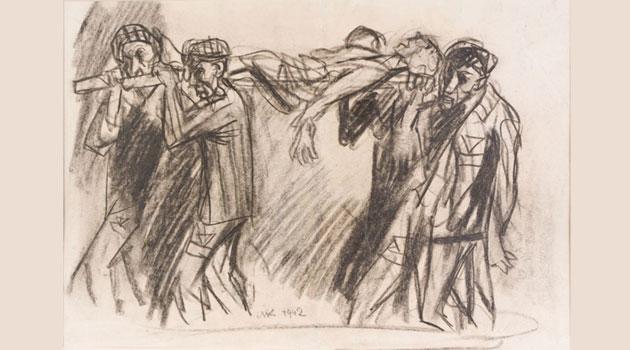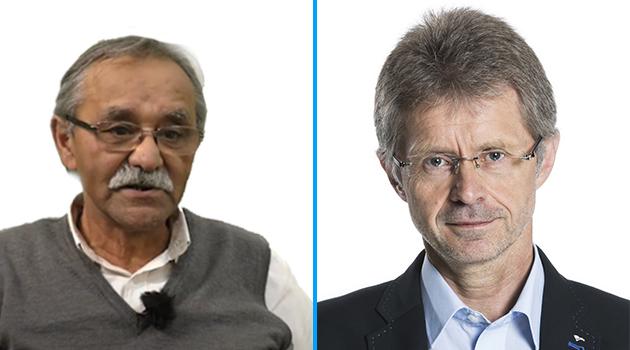Internet connects Holocaust remembrance sites to commemorate deaths of Theresienstadt "Family Camp" inmates at Auschwitz-Birkenau

On 8 March a commemorative ceremony marked the anniversary of the murder of prisoners in the Theresienstadt “Family Camp” at Auschwitz-Birkenau, honoring the memory of those who were murdered at that time through musical performances in an online remembrance event. A virtual connection was established between the Bubny train station in Prague, the Czernin Palace in Prague (long home to the Czech Foreign Ministry) and the site of the former extermination camp.
During the first phase of the closing of the Theresienstadt “Family Camp”, on the night of 8 March and morning of 9 March 1944, the Nazis murdered 3 792 Jewish children, men and women. That event was the biggest mass murder of Czechoslovak citizens during the Second World War.
Most of the victims had first been transported to Theresienstadt from the Bubny train station. A performance prerecorded at the Bubny train station by Edita Adlerová, mezzosoprano, of the composition “Lullaby” by Ilse Weberová, was played at the beginning of the remembrance event.
That was followed by a paraphrasing of a blues composition by Jaroslav Ježek, “Svět naruby” (“The World Upside-Down”), for which the prisoners in Theresienstadt wrote their own lyrics. That piece was performed at Bubny by students from the Gymnázium Přírodní škola (the School of Nature Academy) in Prague.
The ceremony then moved to the Czernin Palace, where Robert Řehák, the Czech Special Envoy for the Holocaust, Interfaith Dialogue and Freedom of Religion, commemorated the children who perished 77 years ago. Řehák also spoke of the fate of František Bass – a child poet who was murdered at the age of 14 at Auschwitz.
A poem by Bass was read and there was a musical performance of a piece by the composer Viktor Ullmann, who also perished in Auschwitz. During the commemorative ceremony candles were lit in front of the palace.
To close the ceremony, candles were also lit at the site of the former extermination camp by the director of the Auschwitz-Birkenau Memorial and Museum, Piotr Cywiński. There it was that in September 1943, 5 000 prisoners from the ghetto in Thereseinstadt arrived, most of whom were citizens of Czechoslovakia, who were given certain “privileges” upon arrival.
The Theresienstadt prisoners were not subjected to age or gender selection and separation, their heads were not shaved, and the Nazis also did not redistribute members of the same families into different sections of the camp. The children from Theresienstadt were allowed to spend their days in what was called the Children’s Block at Auschwitz-Birkenau.
To this day it remains unclear why the Nazis set up this camp for the families from Theresienstadt, which was labeled as section BIIb at Birkenau. According to some historians, the camp was meant to serve propaganda purposes as a “Potemkin village” for a visit from the International Committee of the Red Cross.
However, other historians dispute that explanation, as the “Family Camp” conditions were, despite the “privileges” mentioned, still quite horrible. The prisoners from Theresienstadt were left to rot in the “Family Camp” and the death rate there was no lower than in other parts of Auschwitz-Birkenau.
In December 1943 and May 1944, another 12 500 prisoners arrived from Theresienstadt in several transports and were imprisoned at the “Family Camp” as well. While the first transports from Theresienstadt had comprised almost exclusively prisoners from the Czech lands, about half of the later transports were people from Austria, Germany and the Netherlands.
After some time, members of the resistance movement in Auschwitz ascertained that these Thereseinstadt prisoners’ documents included the acronym “SB” for Sonderbehandlung (“special treatment”) after six months of “quarantine”. What “SB” meant was that they were to be executed without trial, which at Auschwitz usually meant death in the gas chambers.
In March 1944 the people who had been transported there from Theresienstadt in September learned they were to be transferred to the “Heydebreck Labor Camp”. Instead of relocating them to that non-existent camp, the Nazis had most of those prisoners taken to the gas chambers, where they murdered them.
Just a few dozen people from the September transport from Theresienstadt survived that tragic night. The remaining prisoners in the Theresienstadt “Family Camp” were murdered by the Nazis in July 1944.
Prior to that final murder, a selection and separation of the prisoners was undertaken and some people were in fact sent to other camps. Of the 17 500 prisoners from Theresienstadt in the “Family Camp” at Auschwitz-Birkenau, just 1 294 people survived.
